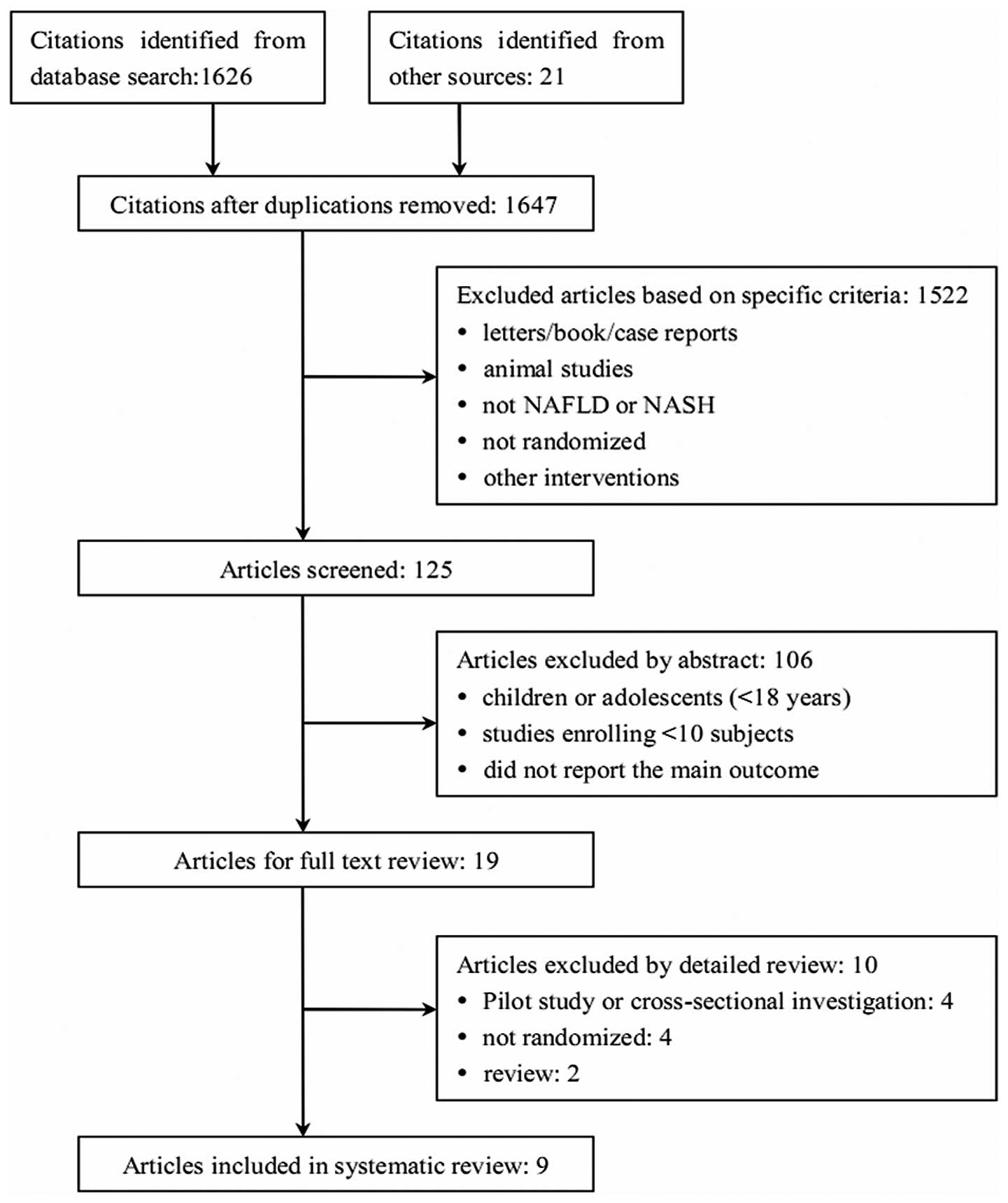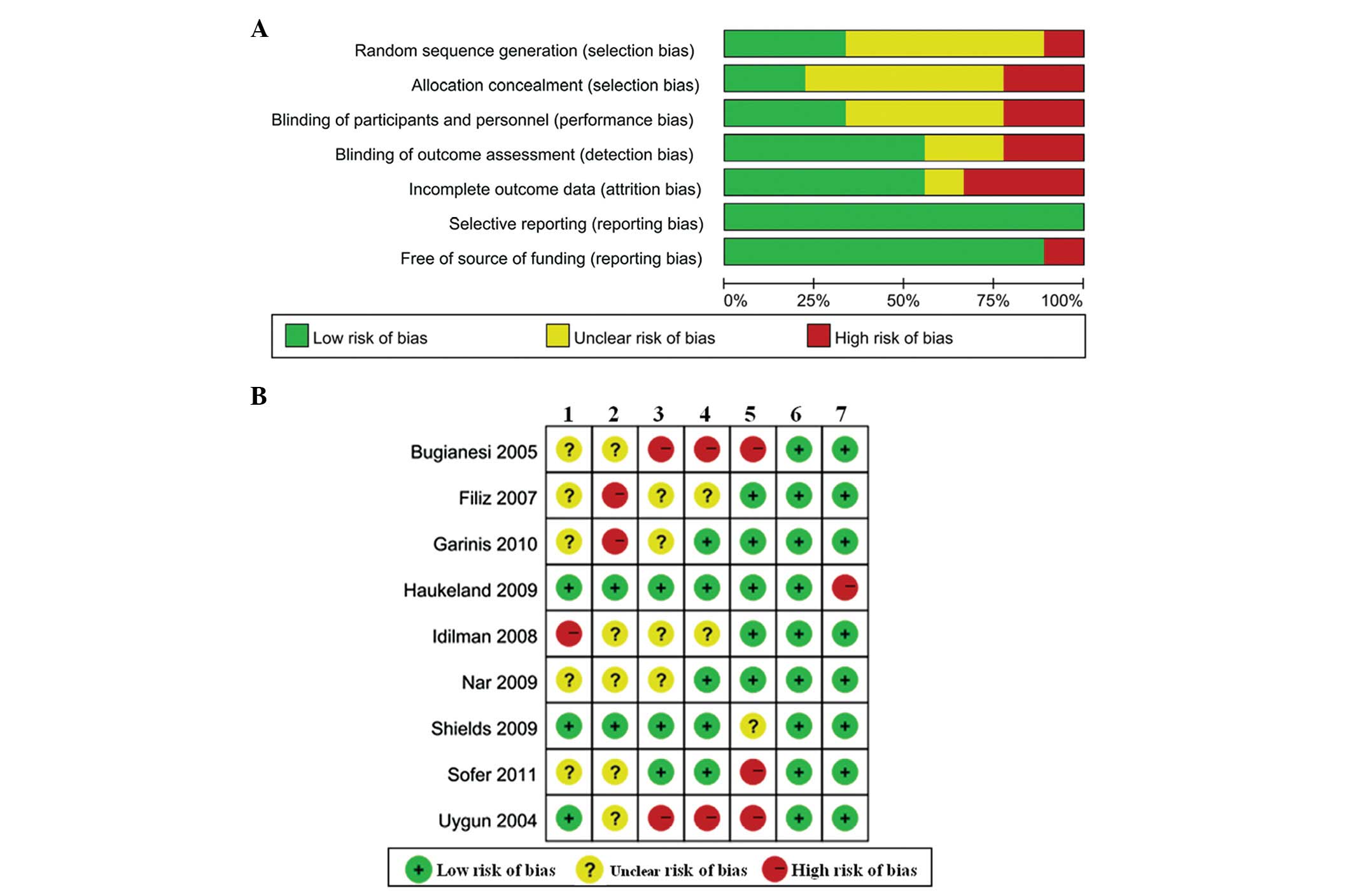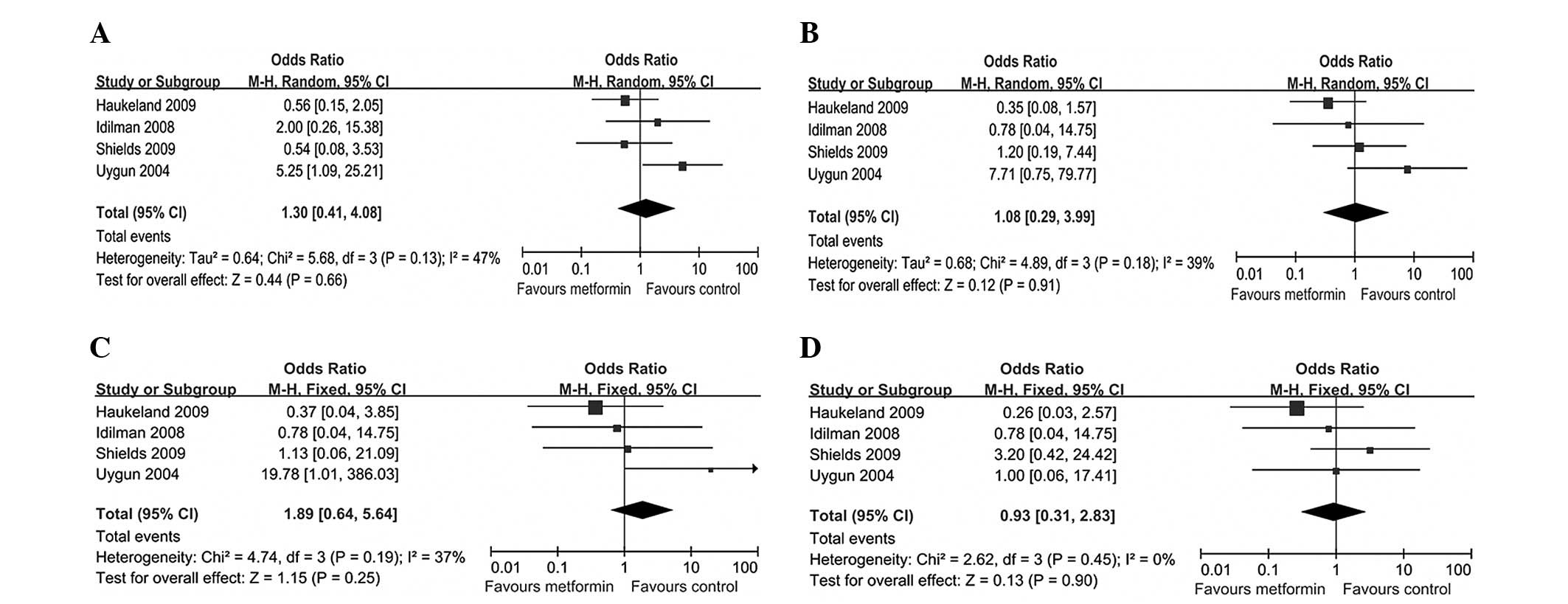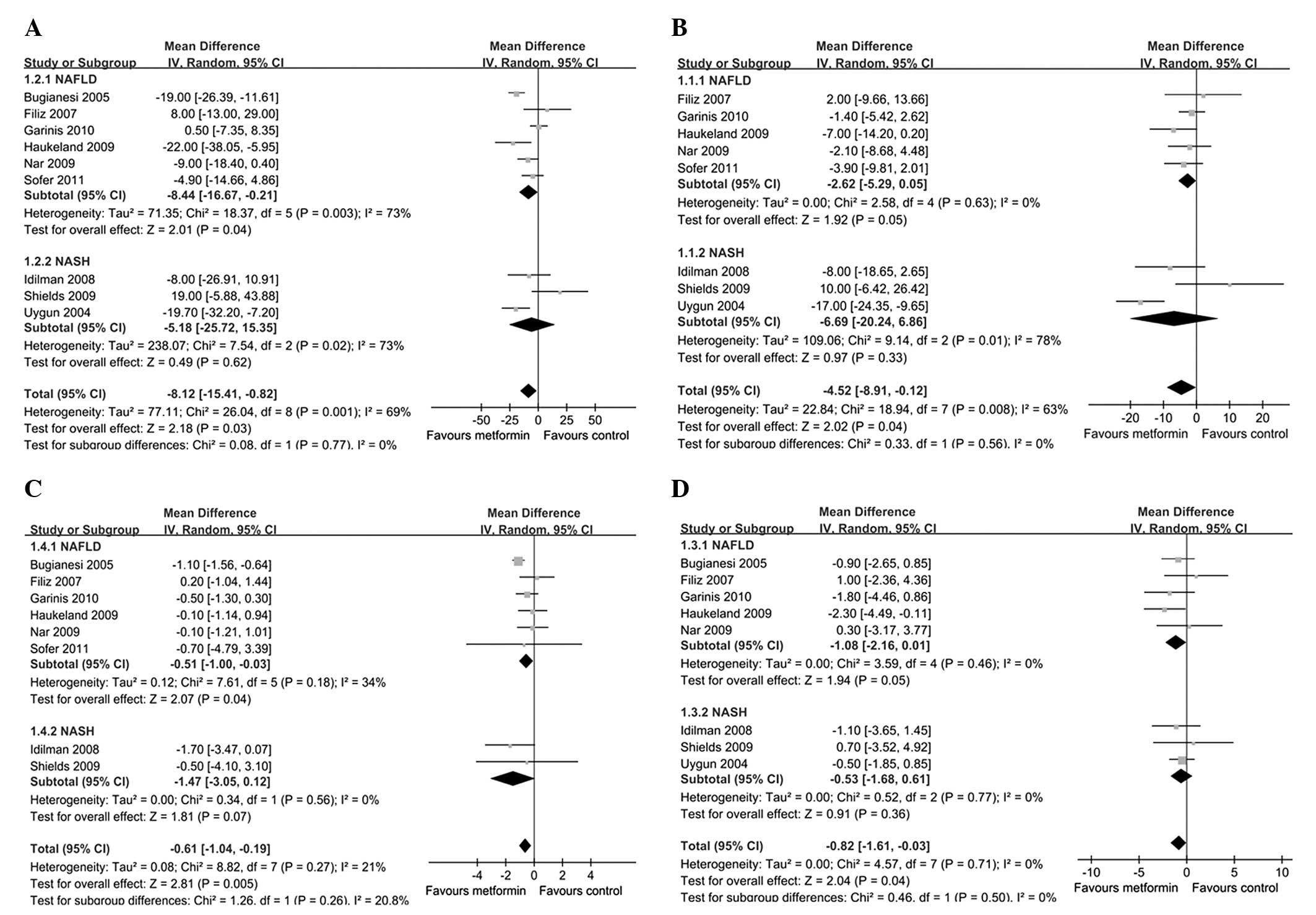|
1.
|
Cohen JC, Horton JD and Hobbs HH: Human
fatty liver disease: old questions and new insights. Science.
332:1519–1523. 2011. View Article : Google Scholar : PubMed/NCBI
|
|
2.
|
Chalasani N, Younossi Z, Lavine JE, et al:
The diagnosis and management of non-alcoholic fatty liver disease:
practice guideline by the American Gastroenterological Association,
American Association for the Study of Liver Diseases, and American
College of Gastroenterology. Gastroenterology. 142:1592–1609. 2012.
View Article : Google Scholar
|
|
3.
|
Wieckowska A, McCullough AJ and Feldstein
AE: Noninvasive diagnosis and monitoring of nonalcoholic
steatohepatitis: present and future. Hepatology. 46:582–589. 2007.
View Article : Google Scholar : PubMed/NCBI
|
|
4.
|
Liou I and Kowdley KV: Natural history of
nonalcoholic steatohepatitis. J Clin Gastroenterol. 40:S11–S16.
2006.
|
|
5.
|
Farrell GC and Larter CZ: Nonalcoholic
fatty liver disease: from steatosis to cirrhosis. Hepatology.
43:S99–S112. 2006. View Article : Google Scholar : PubMed/NCBI
|
|
6.
|
Alberti KG, Zimmet P and Shaw J; IDF
Epidemiology Task Force Consensus Group: The metabolic syndrome - a
new worldwide definition. Lancet. 366:1059–1062. 2005. View Article : Google Scholar : PubMed/NCBI
|
|
7.
|
Targher G, Day CP and Bonora E: Risk of
cardiovascular disease in patients with nonalcoholic fatty liver
disease. N Engl J Med. 363:1341–1350. 2010. View Article : Google Scholar : PubMed/NCBI
|
|
8.
|
Dunn W, Xu R, Wingard DL, et al: Suspected
nonalcoholic fatty liver disease and mortality risk in a
population-based cohort study. Am J Gastroenterol. 103:2263–2271.
2008. View Article : Google Scholar : PubMed/NCBI
|
|
9.
|
Angulo P: Nonalcoholic fatty liver
disease. N Engl J Med. 346:1221–1231. 2002. View Article : Google Scholar : PubMed/NCBI
|
|
10.
|
McCullough AJ: Update on nonalcoholic
fatty liver disease. J Clin Gastroenterol. 34:255–262. 2002.
View Article : Google Scholar : PubMed/NCBI
|
|
11.
|
Owen MR, Doran E and Halestrap AP:
Evidence that metformin exerts its anti-diabetic effects through
inhibition of complex 1 of the mitochondrial respiratory chain.
Biochem J. 348:607–614. 2000. View Article : Google Scholar : PubMed/NCBI
|
|
12.
|
Zhou G, Myers R, Li Y, et al: Role of
AMP-activated protein kinase in mechanism of metformin action. J
Clin Invest. 108:1167–1174. 2001. View
Article : Google Scholar : PubMed/NCBI
|
|
13.
|
Browning JD and Horton JD: Molecular
mediators of hepatic steatosis and liver injury. J Clin Invest.
114:147–152. 2004. View Article : Google Scholar : PubMed/NCBI
|
|
14.
|
Moseley RH: Therapy for nonalcoholic fatty
liver disease. J Clin Gastroenterol. 42:332–335. 2008. View Article : Google Scholar : PubMed/NCBI
|
|
15.
|
Loomba R, Lutchman G, Kleiner DE, et al:
Clinical trial: pilot study of metformin for the treatment of
non-alcoholic steatohepatitis. Aliment Pharmacol Ther. 29:172–182.
2009. View Article : Google Scholar : PubMed/NCBI
|
|
16.
|
Lam B and Younossi ZM: Treatment options
for nonalcoholic fatty liver disease. Therap Adv Gastroenterol.
3:121–137. 2010. View Article : Google Scholar : PubMed/NCBI
|
|
17.
|
Rakoski MO, Singal AG, Rogers MA and
Conjeevaram H: Meta-analysis: insulin sensitizers for the treatment
of non-alcoholic steatohepatitis. Aliment Pharmacol Ther.
32:1211–1221. 2010. View Article : Google Scholar : PubMed/NCBI
|
|
18.
|
Mazza A, Fruci B, Garinis GA, et al: The
role of metformin in the management of NAFLD. Exp Diabetes Res.
2012:7164042012. View Article : Google Scholar : PubMed/NCBI
|
|
19.
|
Higgins PTJ and Green S: Cochrane Handbook
for Systematic Reviews of Interventions. Version 5.1.6. The
Cochrane Collaboration, 2011 (Available at: https://www.cochrane-handbook.org).
Accessed April 2, 2012.
|
|
20.
|
Haukeland JW, Konopski Z, Eggesbo HB, et
al: Metformin in patients with non-alcoholic fatty liver disease: a
randomized, controlled trial. Scand J Gastroenterol. 44:853–860.
2009. View Article : Google Scholar : PubMed/NCBI
|
|
21.
|
Shields WW, Thompson KE, Grice GA, et al:
The effect of metformin and standard therapy versus standard
therapy alone in nondiabetic patients with insulin resistance and
nonalcoholic steatohepatitis (NASH): a pilot trial. Therap Adv
Gastroenterol. 2:157–163. 2009. View Article : Google Scholar
|
|
22.
|
Sofer E, Boaz M, Matas Z, et al: Treatment
with insulin sensitizer metformin improves arterial properties,
metabolic parameters, and liver function in patients with
nonalcoholic fatty liver disease: a randomized, placebo-controlled
trial. Metabolism. 60:1278–1284. 2011. View Article : Google Scholar
|
|
23.
|
Bugianesi E, Gentilcore E, Manini R, et
al: A randomized controlled trial of metformin versus vitamin E or
prescriptive diet in nonalcoholic fatty liver disease. Am J
Gastroenterol. 100:1082–1090. 2005. View Article : Google Scholar : PubMed/NCBI
|
|
24.
|
Garinis GA, Fruci B, Mazza A, et al:
Metformin versus dietary treatment in nonalcoholic hepatic
steatosis: a randomized study. Int J Obes (Lond). 34:1255–1264.
2010. View Article : Google Scholar : PubMed/NCBI
|
|
25.
|
Uygun A, Kadayifci A, Isik AT, et al:
Metformin in the treatment of patients with non-alcoholic
steatohepatitis. Aliment Pharmacol Ther. 19:537–544. 2004.
View Article : Google Scholar : PubMed/NCBI
|
|
26.
|
Akyüz F, Demir K, Ozdil S, et al: The
effects of rosiglitazone, metformin, and diet with exercise in
nonalcoholic fatty liver disease. Dig Dis Sci. 52:2359–2367.
2007.PubMed/NCBI
|
|
27.
|
Idilman R, Mizrak D, Corapcioglu D, et al:
Clinical trial: insulin-sensitizing agents may reduce consequences
of insulin resistance in individuals with non-alcoholic
steatohepatitis. Aliment Pharmacol Ther. 28:200–208. 2008.
View Article : Google Scholar
|
|
28.
|
Nar A and Gedik O: The effect of metformin
on leptin in obese patients with type 2 diabetes mellitus and
nonalcoholic fatty liver disease. Acta Diabetol. 46:113–118. 2009.
View Article : Google Scholar : PubMed/NCBI
|
|
29.
|
Musso G, Gambino R, Cassader M, et al: A
meta-analysis of randomized trials for the treatment of
nonalcoholic fatty liver disease. Hepatology. 52:79–104. 2010.
View Article : Google Scholar : PubMed/NCBI
|
|
30.
|
Musso G, Cassader M, Rosina F and Gambino
R: Impact of current treatments on liver disease, glucose
metabolism and cardiovascular risk in non-alcoholic fatty liver
disease (NAFLD): a systematic review and meta-analysis of
randomised trials. Diabetologia. 55:885–904. 2012. View Article : Google Scholar
|
|
31.
|
Chavez-Tapia NC, Barrientos-Gutierrez T,
Tellez-Avila FI, et al: Insulin sensitizers in treatment of
nonalcoholic fatty liver disease: Systematic review. World J
Gastroenterol. 12:7826–7831. 2006.PubMed/NCBI
|
|
32.
|
Adams LA and Angulo P: Treatment of
non-alcoholic fatty liver disease. Postgrad Med J. 82:315–322.
2006. View Article : Google Scholar : PubMed/NCBI
|
|
33.
|
Mofrad P, Contos MJ, Haque M, et al:
Clinical and histologic spectrum of nonalcoholic fatty liver
disease associated with normal ALT values. Hepatology.
37:1286–1292. 2003. View Article : Google Scholar : PubMed/NCBI
|
|
34.
|
Adams LA, Sanderson S, Lindor KD, et al:
The histological course of nonalcoholic fatty liver disease: a
longitudinal study of 103 patients with sequential liver biopsies.
J Hepatol. 42:132–138. 2005. View Article : Google Scholar : PubMed/NCBI
|
|
35.
|
Orlando R, Azzalini L, Orando S, et al:
Bile acids for non-alcoholic fatty liver disease and/or
steatohepatitis. Cochrane Database Syst Rev. 1:CD0051602007.
|
|
36.
|
Filik L: Role of type 2 diabetes mellitus
in nonalcoholic fatty liver disease. Eur J Clin Invest.
41:1367–1368. 2011. View Article : Google Scholar : PubMed/NCBI
|
|
37.
|
Bonapace S, Perseghin G, Molon G, et al:
Nonalcoholic fatty liver disease is associated with left
ventricular diastolic dysfunction in patients with type 2 diabetes.
Diabetes Care. 35:389–395. 2012. View Article : Google Scholar : PubMed/NCBI
|
|
38.
|
Stumvoll M, Nurjhan N, Perriello G, et al:
Metabolic effects of metformin in non-insulin-dependent diabetes
mellitus. N Engl J Med. 333:550–554. 1995. View Article : Google Scholar : PubMed/NCBI
|
|
39.
|
Hemmingsen B, Christensen LL, Wetterslev
J, et al: Comparison of metformin and insulin versus insulin alone
for type 2 diabetes: systematic review of randomised clinical
trials with meta-analyses and trial sequential analyses. BMJ.
344:1771–1779. 2012. View Article : Google Scholar
|
|
40.
|
Nadeau KJ, Ehlers LB, Zeitler PS, et al:
Treatment of non-alcoholic fatty liver disease with metformin
versus lifestyle intervention in insulin-resistant adolescents.
Pediatr Diabetes. 10:5–13. 2009. View Article : Google Scholar : PubMed/NCBI
|
|
41.
|
Lavine JE, Schwimmer JB, Van Natta ML, et
al: Effect of vitamin E or metformin for treatment of nonalcoholic
fatty liver disease in children and adolescents: the TONIC
randomized controlled trial. JAMA. 305:1659–1668. 2011. View Article : Google Scholar : PubMed/NCBI
|
|
42.
|
Lavine JE, Schwimmer JB, Molleston JP, et
al: Treatment of nonalcoholic fatty liver disease in children:
TONIC trial design. Contemp Clin Trials. 31:62–70. 2010. View Article : Google Scholar : PubMed/NCBI
|














